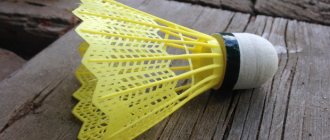Today there are a huge number of different development methods and systems, including non-standard ones, for preschool development and upbringing of a child. Every year - more and more. It is not surprising that this causes a mixed reaction among professionals: there is a Federal State Educational Standard, there are programs, what other “lettergrams” and “spiritual approach to the development of a child’s free personality”? There is definitely a subject for debate. Our expert Marina Bolotova, the scientific director of preschool educational organizations, has carefully studied many popular and original modern methods due to her work. This article is a specialist’s answers to the TOP 5 alternatives to the classical approach. So as not to miss the important things behind the emotions.
All the methods we talk about in this article are focused on the environmental approach: the child is in a specially organized environment that best satisfies the child’s needs.
Montessori pedagogy
Technology invented by teacher Maria Montessori. Initially, she conceived the approach to work with “special” children, but then transferred it to everyone else. The main idea of the approach is that every child has a powerful potential for development; you just need to create conditions using a special environment and not disturb the child.
What principles does it work on?
- A special environment is created, divided into five zones. Practical for the development of everyday skills, sensory with toys of different shapes, sizes, colors, mathematical for the development of counting skills and familiarity with geometric shapes and symbols, language zone for learning letters and syllables, space zone for getting to know the outside world and the mysteries of nature.
- Classes are held in different age groups. Older children interact with younger ones: they pass on their skills to the younger ones and not only teach them, but also develop their skills even better.
- Teachers do not impose or forbid anything on the child - he makes the choice to play with dolls, draw or jump and run. The teacher only presents the material and reveals it as much as possible.
What goals does the child achieve?
- Learns independence. Free choice of activities also develops self-confidence and self-confidence.
- Learns to respect others. Children work and play quietly to respect the time and space of others. You can let off steam in a special “motor” zone. Children also clean up toys after themselves and follow the principle “whoever takes it first gets to play.”
- He studies mathematics, learns about nature and culture. This is helped by working in different zones.
- The teacher must respect children and their choice: give them the opportunity to play and choose the pace of classes.
- The teacher must be able to create an environment. Many toys are made by hand from natural materials.
- The teacher must be able to captivate children. It is he who presents materials for games and activities, and he serves as a model in group creative activities.
Reggio pedagogy
Italian technology, based on the ideas of Vygotsky and Maria Montessori. The author of the technology is Loris Malaguzzi. Malaguzzi believed that the child had at least 100 languages, but 99 of them were stolen. Much in a child’s life happens at the direction of adults, even holidays. The main postulate is that the environment must meet the needs and capabilities of the child.
What principles does it work on?
- A separate program includes space for the child. He can even retire and do only what he wants.
- The parent is completely immersed in the work of the kindergarten. He sometimes goes to kindergarten with the child, helps, and becomes a partner.
- There is no assessment and control - no final tests. The Reggio teacher uses observation, records the results of the child’s work, but does not give an assessment.
What goals does the child achieve?
- Learns partnership. Children are taught to work in groups so that they learn to negotiate, cooperate, and get used to the fact that they are “not alone.”
- Studies culture. Classes are not limited to the kindergarten environment: children are taken on excursions, helped to understand relationships between people, the rules of society, and traditions.
- Learns free choice. The child himself chooses the pace of classes and the materials with which he will play.
What should a teacher be like?
The teacher must follow six rules:
- Respect the child and look him in the eye.
- Explain the rules and ask a question. Only this way, and not the other way around.
- Not “wrong”, but “different”.
- Offer choice and don't rush.
- Learn in any situation.
- Fantasizing is more important than reading.
Innovative technologies in preschool education
Modern innovative technologies according to the Federal State Educational Standard in preschool education have been considered by many authors: N. D. Malakhova, A. M. Moiseeva, V. S. Lazarev. Pedagogical innovation is defined as the introduction of innovations into the state educational environment that improve the system as a whole. In the process of introducing innovations, there is a creative rethinking of programs and methods - this is the main feature of the technology.
How does innovation occur in early childhood education?
- In a series of scientific research.
- Due to the need for innovation in preschools and primary schools.
- They arise as a result of the variable creativity of teachers.
- They arise due to the great desire of parents to reveal the potential of the baby and observe the positive dynamics of development.
Important! Innovative teaching methods carried out in preschool educational institutions according to the Federal State Educational Standard are not completely new and universal technologies for teachers. These are just effective ways to use traditional parenting methods, improved and supplemented by modern research.
Pedagogical technologies of preschool education of our time
Technology is a set of techniques that are used in a particular art or business.
The use of modern educational and pedagogical technologies in kindergarten must meet such technology criteria as:
- Conceptuality (a certain scientific concept is taken, which includes the rationale for achieving educational goals);
- Systematicity (logic, list of interrelations of all parts of the system, integrity);
- Manageability (goal setting, design of a learning model, correction of results, step-by-step diagnostics, drawing up plans and reports);
- Efficiency (considers the optimality of costs and the guarantee of achieving set goals);
- Reproducibility (implies the specifics of pedagogical technology and its possible reproduction in a new place).
Form of health-saving technologies in physical education
The list of modern educational technologies includes:
- Innovative technologies in the field of health and physical education - all technologies related to the impact on the health of a preschooler at any level (psychological, energetic or informational). The goal is to preserve the baby’s health and develop all the necessary skills and abilities to maintain a healthy lifestyle.
- Interactive. Due to the fact that children are “thrown” into the sphere for interpersonal interaction, their social and personal experience is enriched. This could be conversations, observations, or conducting small experiments.
- Information and communication. In this technology, education should include new elements - an interactive board (on which the teacher can show presentations, thematic films and cartoons), a computer or tablet.
- Personality-oriented. In this case, the personality of the preschooler is placed at the center of systemic education, regardless of his age. It is necessary to provide the baby with comfortable conditions for safe and conflict-free development and the full realization of his natural potential.
- Gaming technologies are built as a comprehensive education, capturing a small part of the educational process and united by a common plot. An example would be games aimed at developing the ability to identify features of objects and compare them with each other.
How to develop self-confidence and leadership qualities in a child
Interactive education technologies
Interactive education, translated from English into Russian, means the organization of cognitive activity in the mode of active interaction - dialogue or conversation.
Important! The teacher of a preschool institution, secondary education or university ceases to be a “center” for students. He regulates the communication process, organizes it, formulates brief topics or questions for discussion, advises and monitors the order of exercises.
The following can be used as interactive technologies in preschool institutions:
- Exercise “Microphone”, where children, together with the teacher, pass a toy microphone to each other in a circle and speak on a topic given by the adults. This may be the first task in teaching culture - to talk about yourself, about your mood at the moment.
- Impromptu debates. Children also stand in a circle and speak out on a given topic. However, the words of each preschooler can be discussed. For example, Misha said that he was in a bad mood while listening to music. Children take turns raising their hands and saying how Misha can improve his mood.
- Synthesis of thoughts. During this exercise, children unite in small groups to complete a joint task. For example, they help a math bunny count all the apples on a sheet and color them.
In kindergartens that have passed state certification, 3 main forms of interactive learning have long been adopted: in pairs (2 children), microgroups (up to 4 children) and small groups (up to 6 preschoolers).
Important! In such technologies, you should not say “correct” when answering a child. It is better to use words such as “good”, “original”, “interesting”. This will encourage the baby to talk further.
A preschooler sitting on a chair is not learning. He listens, but does not hear. Therefore, it is so important to always “draw” him into learning, to make sure that the baby himself becomes part of this process.
One of the forms of interactive classes
Innovative technologies for physical education of preschool children
How are innovative technologies used in children's development? Due to the combination of progressive technologies and stereotypical basic elements of education, innovations have a good effect on the personal development of a preschooler, involving him in the sociocultural environment.
The reports and abstracts highlight the main innovation in the system of physical education for preschool children - the separation of the areas “Health” and “Physical Education”.
Thus, “Health” helps to preserve and strengthen the psyche of children, develop hygiene skills and form general ideas about a healthy lifestyle.
What is the artistic and aesthetic development of preschool children
“Physical education” deals with the development of the physical qualities of a preschooler, mastering basic sports movements and the formation of a further need for activity.
Technologies in the field of “Health” are divided into the following:
- health-saving (preserving health in all possible ways);
- health-promoting (stimulating and promoting health - physical events and holidays, physical education sessions, etc.);
- therapeutic and recreational (health compensation occurs - massages, visits to salt rooms, infrared saunas);
- health-forming (ways to increase health - physical education and recreational activities).
Fitness technologies in preschool educational institutions according to the Federal State Educational Standard
Previously, fitness technologies were used only in foreign education methods. Recently, fitness has been considered in the complex of the field of “Physical Culture”.
Important! This is an innovative system that affects the health and improvement of the physical fitness of a preschooler.
Fitness methods and training technologies include:
- step aerobics;
- rhythmoplasty;
- dance and play gymnastics;
- stretching elements;
- fitball exercises.
Thanks to the development of fitness in Russia, many interesting trends have emerged that are also applicable in preschool education. However, most classes carried out using fitness technology can only be carried out if the child has a doctor’s certificate. Otherwise, such activities are contraindicated.
Physical education classes on fitball
Gaming technologies for additional education
In additional education, games “for the sake of learning” are widely used. In the process of activity, the child develops interests in knowledge, accumulates thematic knowledge and abilities. The pedagogical game has a clearly defined goal and contributes to the achievement of a certain result. For the most part, learning in the game is unobtrusive and voluntary. For a child, play is a much more desirable reality than existing reality.
Gaming technologies, depending on the methodology, are divided into:
- role-playing;
- plot;
- imitation;
- psychodramatic;
- business;
- organizational and activity.
It is better to explain the game in an introduction related to the topic of the lesson. You can fully explain the essence of the game as the action progresses. The teacher’s task is to organize gaming activities for all children (both actively participating and fans).
Important! The game process should be accompanied by a dialogue between the teacher and children. Moreover, even if the kids answered incorrectly (in a word game), the teacher needs to repeat their answer. This way preschoolers can better follow the progress of the action.
Voskobovich games
Educational games created by physicist-engineer Vyacheslav Voskobovich. They represent a developing environment of different zones and elements, united by one fairy-tale plot.
What principles does it work on?
- It is based on three principles: interest, knowledge and creativity. This builds cognitive and research skills.
- Games are developed in accordance with the interests of the children. Each can be used by children from 2 to 7 years old; for younger children the tasks are simpler.
- The developmental environment “Purple Forest” has been developed for games, with several zones in which the child fulfills certain needs.
What goals does the child achieve?
The main goals of technology are learning new things, developing the ability to observe, building confidence, a harmonious approach to the development of emotionality, imaginative thinking and logic.
What should a teacher be like?
- The teacher must understand the material: know the games, be able to build a plot.
- The teacher must involve the children in the game; some time must be spent getting to know its rules.
- The teacher does not evaluate the completion of assignments. Each age has its own level; if you can’t cope, you can move on to an easier one.
Dewey technology
John Dewey developed a practice-oriented approach. Dewey believed that a preschooler should engage in play and work activities, which gives him the necessary life experience.
What principles does it work on?
- Everything that happens to a child must be practically oriented. There is no need to overload the brain with unnecessary knowledge; you need to teach how to work with your own hands, and apply acquired knowledge and skills in other situations.
- Education should be aimed at gaining experience, which can only be accumulated by the child himself. Thinking is only a tool for solving problems. The child explores the world around him and ultimately wants to learn the necessary skills and experience them.
- In addition to work skills, geography and history are important. Geography helps to learn about the world around us, history helps us learn about the world and culture of people.
What goals does the child achieve?
- Gains life experience. The child learns to solve problems and develops skills.
- He understands geography and history. This helps to understand the world around us and people with their relationships.
- Learns to be entrepreneurial. This is facilitated by the projects that the teacher launches with the children.
What should a teacher be like?
- Must have strong instrumental skills, such as working with hands. Without this, he will not teach the necessary skills to children.
- Does not compare children with a friend - competition is prohibited in technology. The child is compared only with himself.
- Teaches children project activities. Projects help children gain experience and learn skills, as well as collaborate with others and develop their own entrepreneurial spirit.
Modern forms of education
Let's consider various options for modern forms of education, which are based on children's activities:
- games - travel;
-experimentation;
-project activities;
-collecting;
- staging;
- fairy tale activities;
- surprise classes.
- Travel games are effective in introducing children of the 7th year of life to different countries, continents, oceans, etc. They allow children to “live” material that is interesting to them, learn new things, reflecting on what has already been included in their experience. In the game, children learn to express their attitude to what is happening, immerse themselves in a situation organized by adults: they turn into “travelers”, “Indians”, “inhabitants of the underwater kingdom”, etc. Organizing and conducting the game is reminiscent of preparing a theatrical performance, but with a significant difference: there are no spectators, and the number of participants is unlimited.
- Children's experimentation allows children to successfully develop curiosity, activity, and the desire to independently find solutions to problems. Children are interested in different types of experiments. A thought experiment involves doing things in your mind. But the most interesting experiments are real experiments with real objects and their properties (water, ice, snow, air, etc.). This helps the child to master the essential features of inanimate nature and the plant world.
Method - experimentation - effective study of the properties of objects, transformation of its properties, structure, effectively establishing relationships with other objects, establishing interdependence.
Using this method allows you to control phenomena by causing or stopping these processes. A child can observe and learn such properties and connections that are inaccessible to direct perception in everyday life (properties of a magnet, a light beam, air movement, the physical state of water, etc.) Experimentation and elementary experiments help children comprehend the phenomena of the surrounding world, broaden their horizons, and understand existing relationships. Children develop observation skills, basic analytical skills, the desire to compare, contrast, make assumptions, and justify conclusions.
Practical experimentation and research activities are aimed at comprehending the entire diversity of the surrounding world through real experiments with real objects and their properties. Through practical experimentation, children can determine the buoyancy of objects, the properties of water and a ray of light, the properties of a magnet, etc.
Mental experimentation, unlike the practical form, is carried out only mentally (in the mind). Mental research is carried out by searching for answers to posed questions, analyzing and solving problem situations.
Social experimentation is updated in older preschool age. A unique object of study and experiment are the child’s relationships with his social environment: peers, other children (younger or older, children of the opposite sex, with adults (teachers and relatives).



